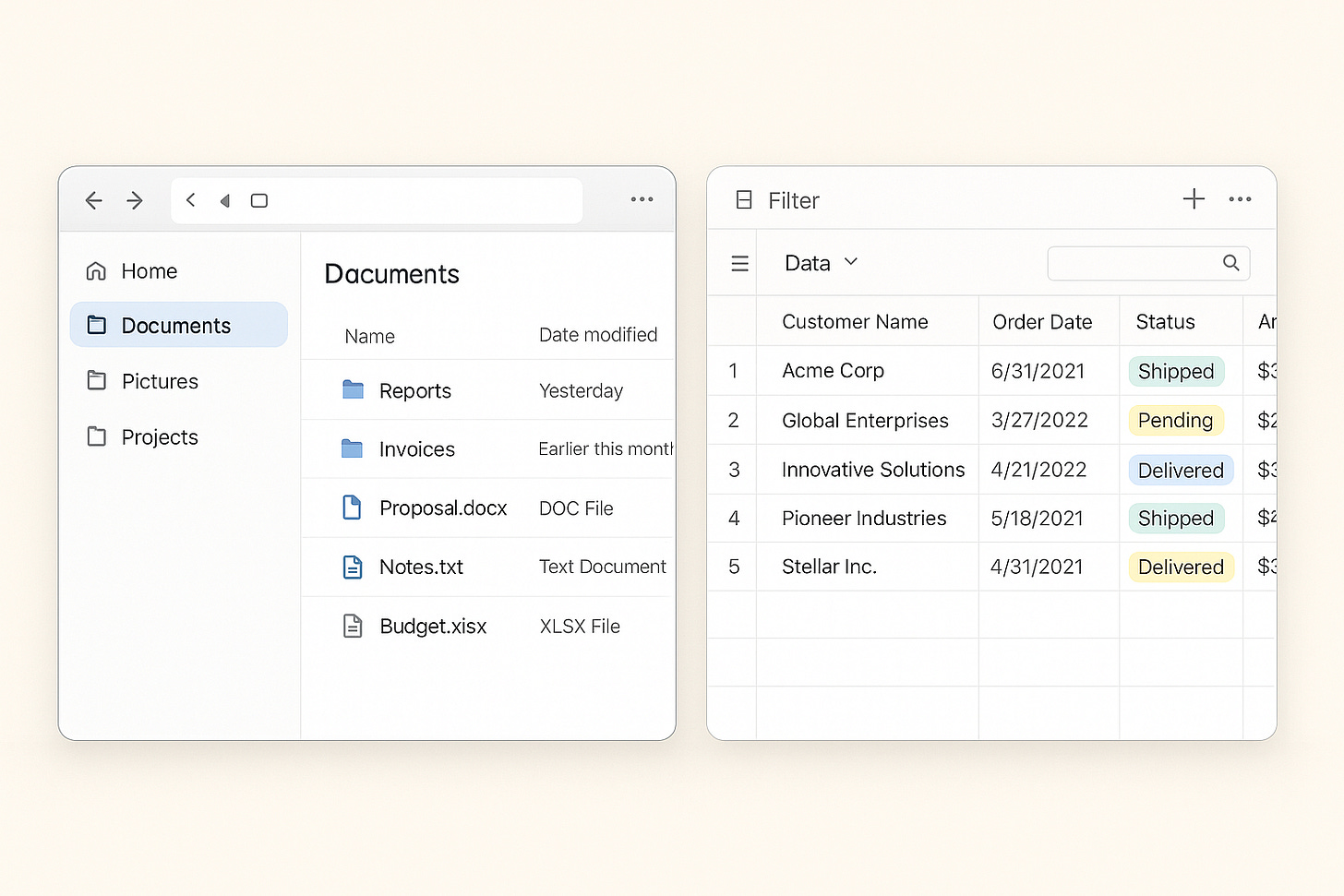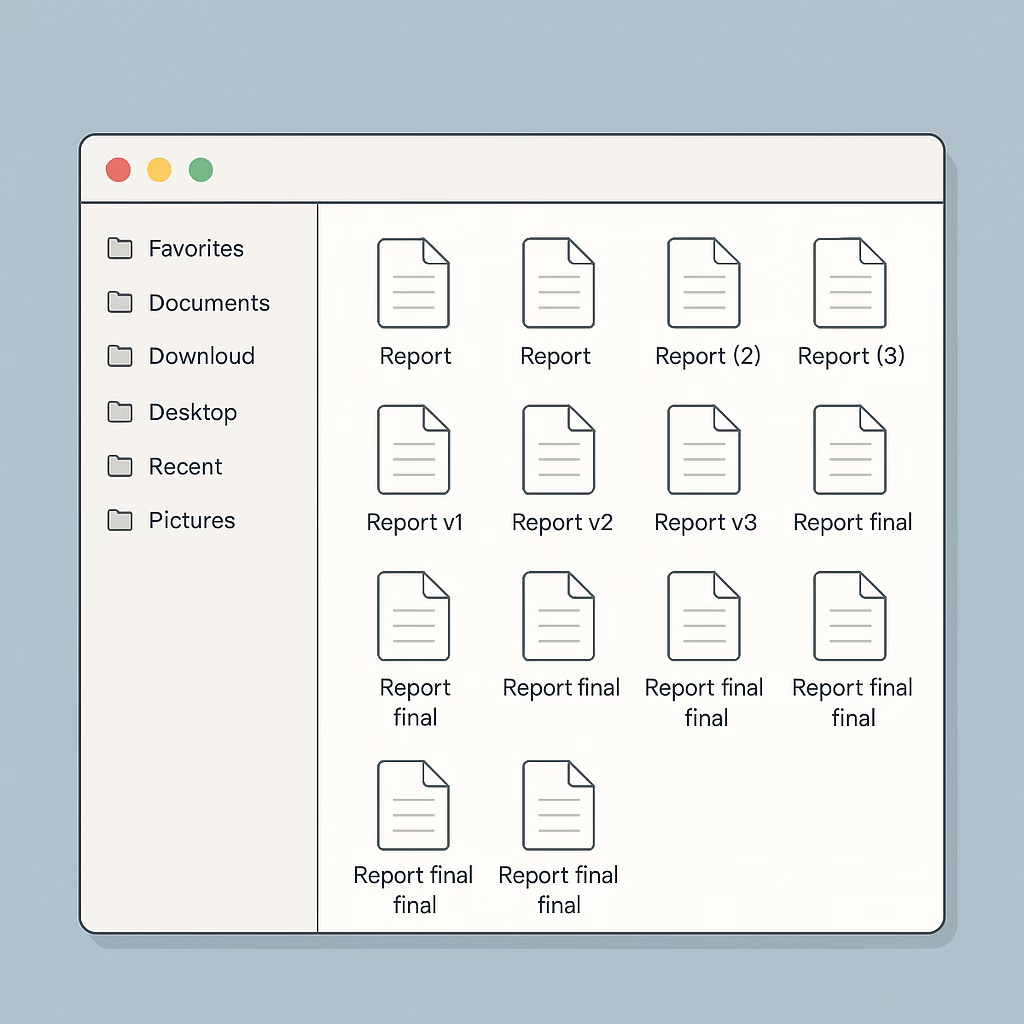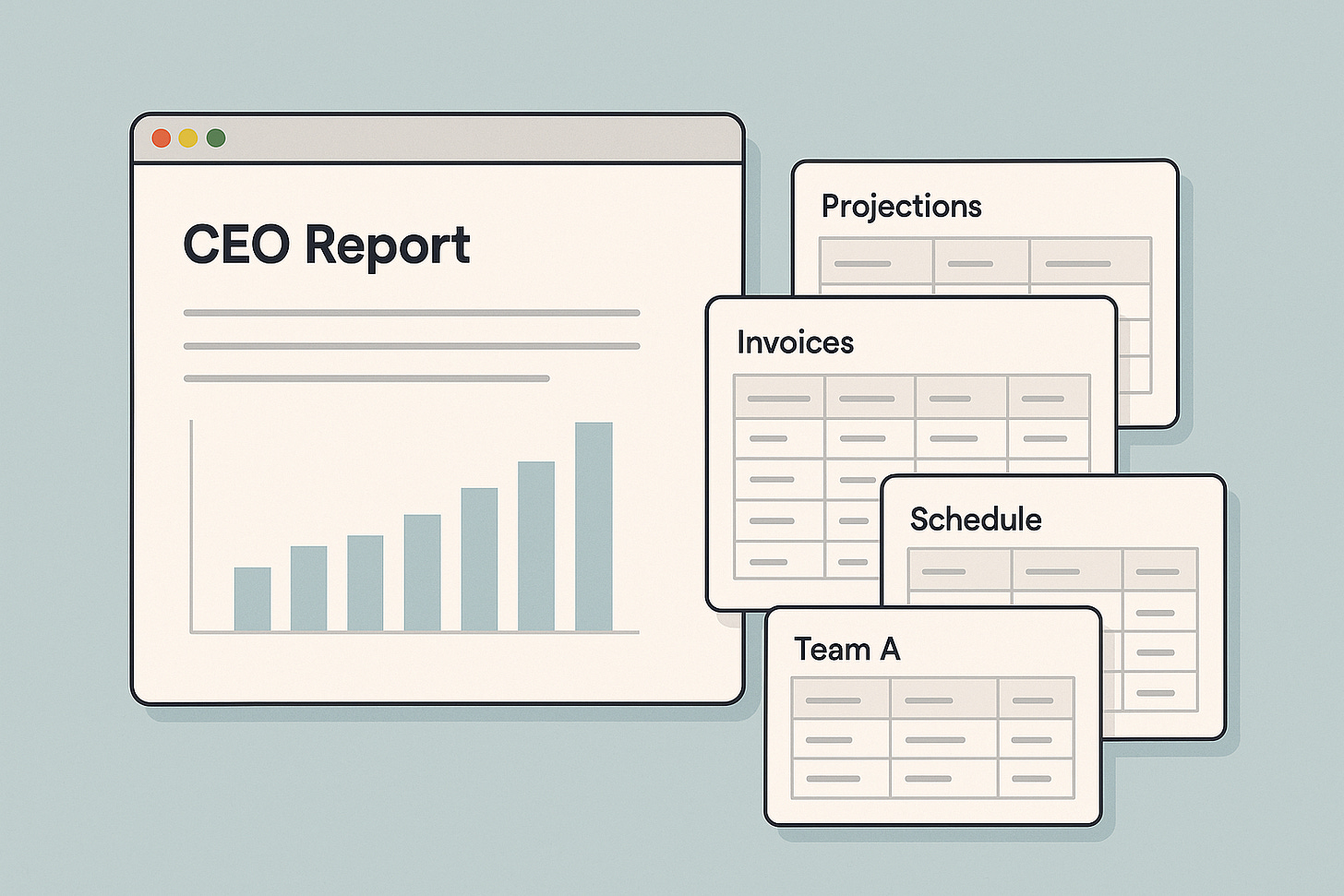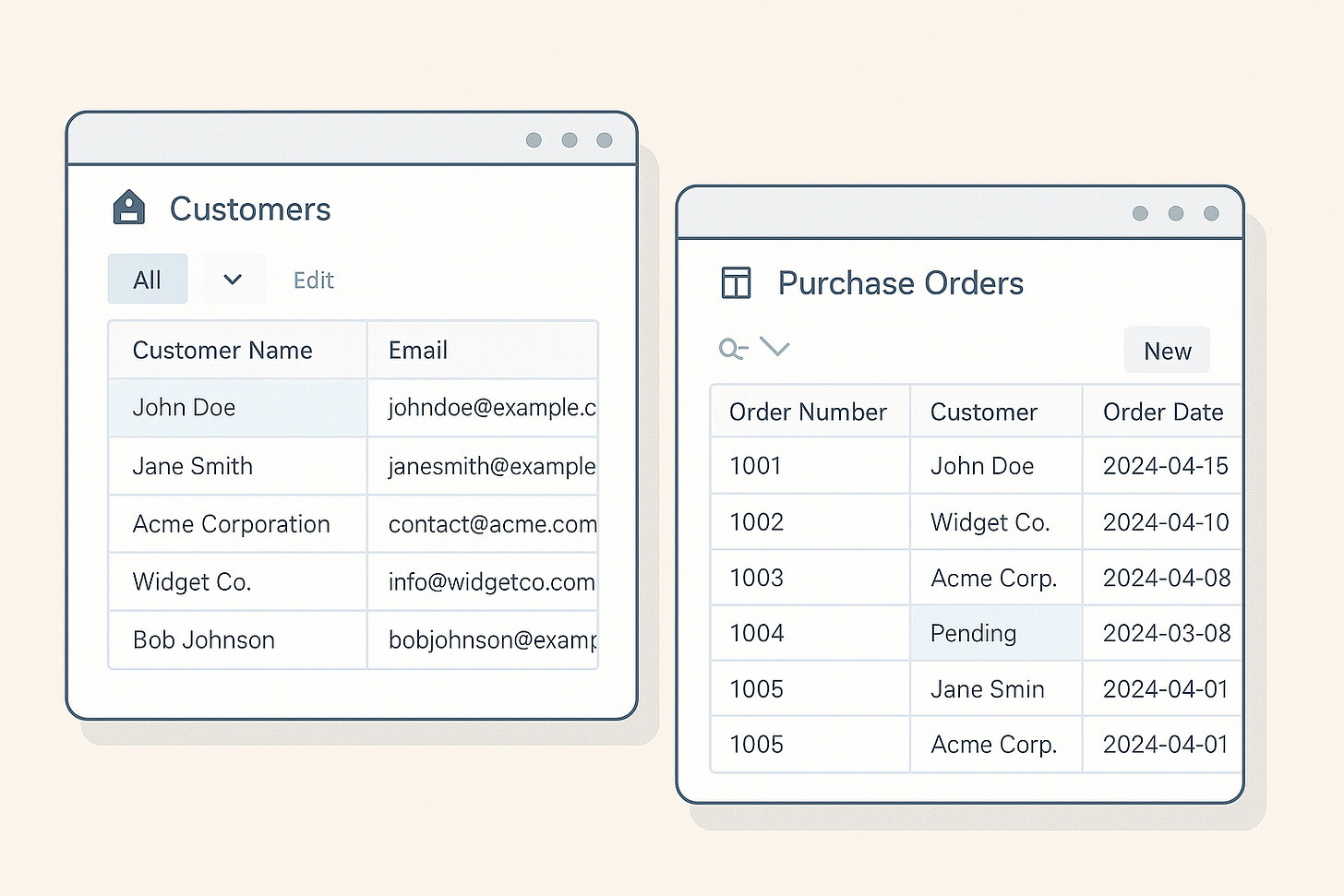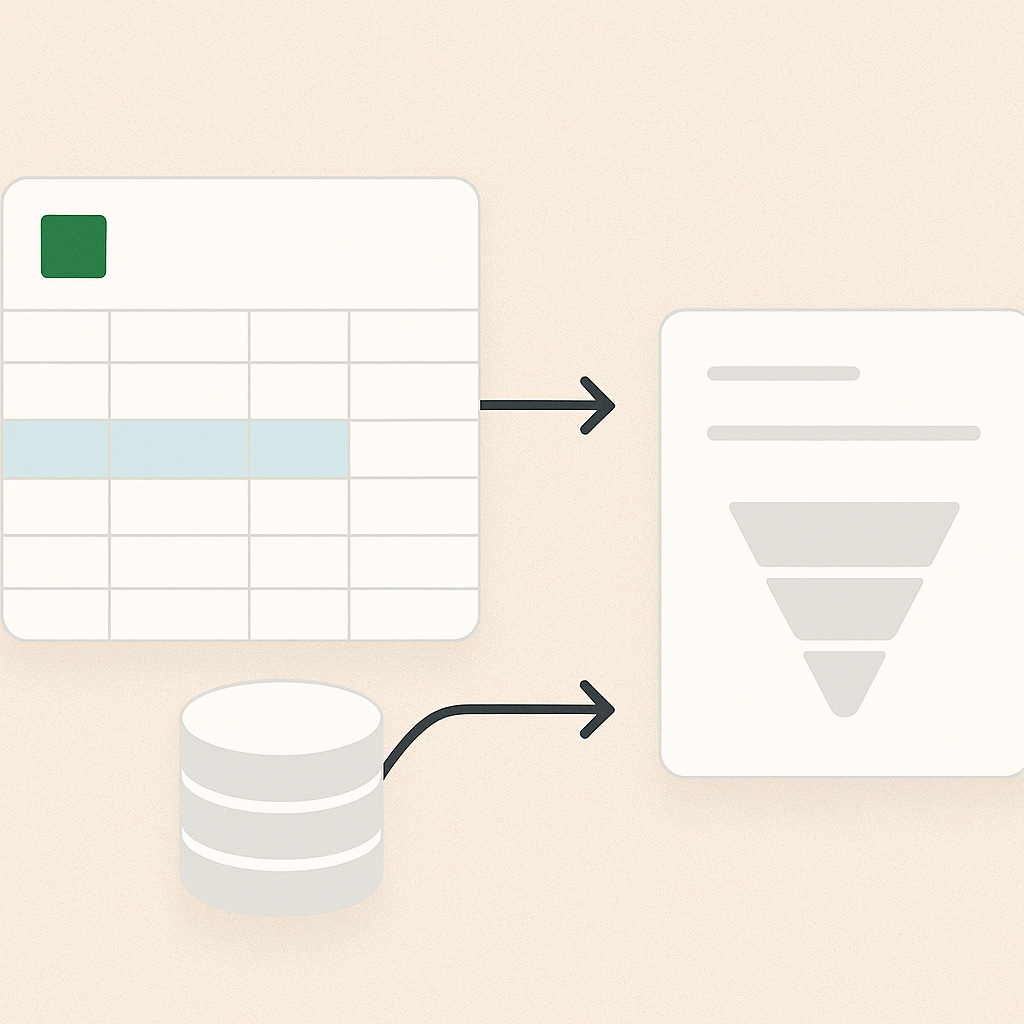Files vs. Data: The First Step Toward Smarter Automation
A beginner-friendly guide to storing information for the AI era
We often generalize the way we store information. We tend to think of it as placing papers in a folder, or digital documents in a computer folder. But if you want to start working with workflow automation tools, it helps to go one level deeper.
Let’s begin with a simple distinction: Files and Data.
Files: documents, photos, digital projects, spreadsheets, and other containers.
Data: structured information that can be organized, queried, and reused.
Of course, files also contain data—spreadsheets like Excel are a common example—but storing information in a file is very different from storing it in a database or an application. Understanding this difference is key.
The problem with digital files
Files can hold valuable information, such as customer names or invoice numbers, but that information is often locked away. You need to open the file to access it, and within an organization, this raises questions:
Which file has the latest version?
Where is it stored?
Who has access to it?
Even when the data inside the files is high quality, it’s difficult for software systems to use it efficiently. For example, generating reports across multiple files usually requires manual work, which is slow and error-prone.
Imagine this: The CEO requests a report with issued invoices, paid invoices, and a projection of the company’s cash flow. She also wants to compare those projections with the scheduled capacity of the production teams. If each team tracks information in different documents and software, the company ends up running around collecting files, trying to piece together a comprehensive report from scratch—leaving plenty of room for mistakes, wrong assumptions, and outdated numbers.
What about Data storage?
Spreadsheets can certainly organize data—customers, invoices, orders—but at the end of the day, they are still files. A more powerful approach is to use applications designed to capture and store data in a structured way.
Most of these applications provide user-friendly screens for entering and managing information, while in the background, they rely on databases. Databases are built to make data available, consistent, and reusable across multiple processes—exactly what you need when you want automation to work.
You’ll encounter many applications today that go beyond merely presenting files—they actually store structured data in ways that make it dynamic and reusable. For instance, SharePoint manages both document libraries and structured lists, letting you store, query, and automate data. Notion blurs the lines between notes and databases with flexible tables that support rich, relational data. Workflow platforms like Make offer data stores, a feature similar to simple databases for passing, storing, and retrieving information within scenarios. And there’s also Zapier Tables, a newer offering that lets you build tables, effectively, lightweight, structured databases directly within Zapier. You can trigger actions automatically, add columns like text, dropdowns, dates, or even buttons to launch workflows—all tightly integrated with your automations.
A practical note
As you can see, I’m suggesting relying more on applications and databases for storing data rather than files. But that doesn’t mean you should stop using Excel or Google Sheets. On the contrary, spreadsheets are practical and powerful tools, especially for quick analysis or as intermediate steps in your workflows. The key is not to treat them as the final home of your organization’s data. Instead, let them play their role in the process—for example, capturing inputs or running calculations—and then use your workflow automations to keep the data in sync with your core applications and databases.
Also note that databases can include digital files as part of the stored information. For example, a SharePoint list tracking customer orders might have fields like Customer Name, Order Date, Order Status, and even a Link to the Order Form stored as a file attachment. This way, structured data and files can live side by side—organized, searchable, and integrated into your workflows.
The main takeaway
Centralize your important information in applications and databases rather than scattering it across files and one-off spreadsheets. Doing so reduces duplicated work, improves access, and gives you stronger control over security and safety. Store data, not just files.
Once your data lives in structured systems like SharePoint (or similar apps), producing reports becomes faster, easier, and more reliable. And beyond that, you unlock the real benefits: the ability to use AI and workflow automation to send notifications, update statuses, and even generate reports automatically—turning your information into a living, connected resource rather than a static archive.
Thank you for reading!
Jose.
Help this publication grow:
.


